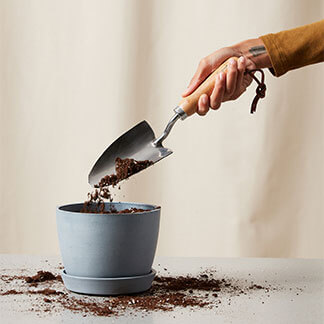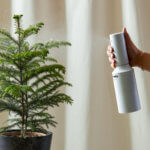Overwatering
Overwatering your ivy can lead to yellowing leaves. Be sure to let the soil dry out 25-50% of the way down before watering your plant. In the winter, you can err on the dry side. Always be sure to check the soil before you water.
When you water, make sure you provide enough water so that liquid soaks into the soil and flows from the drainage hole at the bottom of the pot and into the saucer. It’s extremely important to discard any excess water in the saucer to avoid root rot.
Pests
Pests like spider mites, scale, and mealybugs can start to suck the nutrients from your plant, leading to discolored, yellowing leaves. It’s best to watch out for these pests regularly, looking for fine webbing and sticky substances on the plant. Treat immediately if you see signs of pests.
Normal Yellowing
Sometimes, yellowing is normal! If your plant is otherwise healthy and growing, it is likely that the older leaves are yellowing as part of the plant’s natural growth cycle. Your ivy will recycle the energy from older leaves to aid in new growth. You can trim these yellow leaves off once they are 75% discolored.











